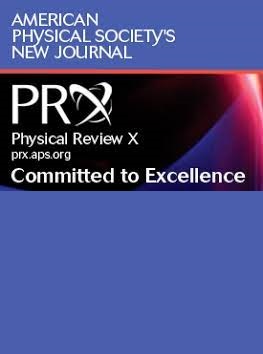Superballistic Conduction in Hydrodynamic Antidot Graphene Superlattices
IF 11.6
1区 物理与天体物理
Q1 PHYSICS, MULTIDISCIPLINARY
引用次数: 0
Abstract
Viscous electron flow exhibits exotic signatures such as superballistic conduction. In order to observe hydrodynamics effects, a 2D device where the current flow is as inhomogeneous as possible is desirable. To this end, we build three antidot graphene superlattices with different hole diameters. We measure their electrical properties at various temperatures and under the effect of a perpendicular magnetic field. We find an enhanced superballistic effect, suggesting the effectiveness of the geometry at bending the electron flow. In addition, superballistic conduction, which is related to a transition from a noncollective to a collective regime of transport, behaves nonmonotonically with the magnetic field. We also analyze the device resistance as a function of the size of the antidot superlattice to find characteristic scaling laws describing the different transport regimes. We prove that the antidot superlattice is a convenient geometry for realizing hydrodynamic flow and provide valuable explanations for the technologically relevant effects of superballistic conduction and scaling laws.求助全文
约1分钟内获得全文
求助全文
来源期刊

Physical Review X
PHYSICS, MULTIDISCIPLINARY-
CiteScore
24.60
自引率
1.60%
发文量
197
审稿时长
3 months
期刊介绍:
Physical Review X (PRX) stands as an exclusively online, fully open-access journal, emphasizing innovation, quality, and enduring impact in the scientific content it disseminates. Devoted to showcasing a curated selection of papers from pure, applied, and interdisciplinary physics, PRX aims to feature work with the potential to shape current and future research while leaving a lasting and profound impact in their respective fields. Encompassing the entire spectrum of physics subject areas, PRX places a special focus on groundbreaking interdisciplinary research with broad-reaching influence.
 求助内容:
求助内容: 应助结果提醒方式:
应助结果提醒方式:


